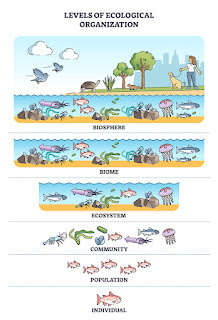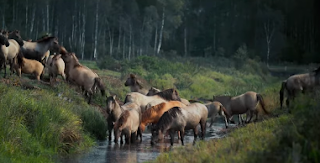Life is both mysterious and amazing. Within a beautiful forest there are all kinds of interactions taking place between living and non-living factors. Let’s take a look at the different levels of biological organization found on Earth.
An organism refers to a living thing that has an organized structure, can react to stimuli, reproduce, requires energy, plus grows and adapts.
Examples include animals, plants, fungi, protists, and many, many more.
Whenever you get a group of the same type of individuals together, like a group of Penguins or wolves, horses, or plants you have a population. The organisms are all of the same species.
If you have several different populations living together you have a community.
A community does not include the non-living factors also called abiotic factors.
A desert is an ecosystem.
A forest is an ecosystem.
A pond is an ecosystem, and a rotting log can even be an ecosystem.
An ecosystem is a community of living and non-living objects living together in a particular area.
A Biome is a large ecosystem that has formed in response to the physical environment in which they are found and a shared regional climate. Examples include a desert, a tropical rainforest, and a deciduous forest.
Please check out our YOUTUBE channel. We have created 3200 videos, have had 170 million views, and have 530,000 subscribers.





0 comments:
Post a Comment